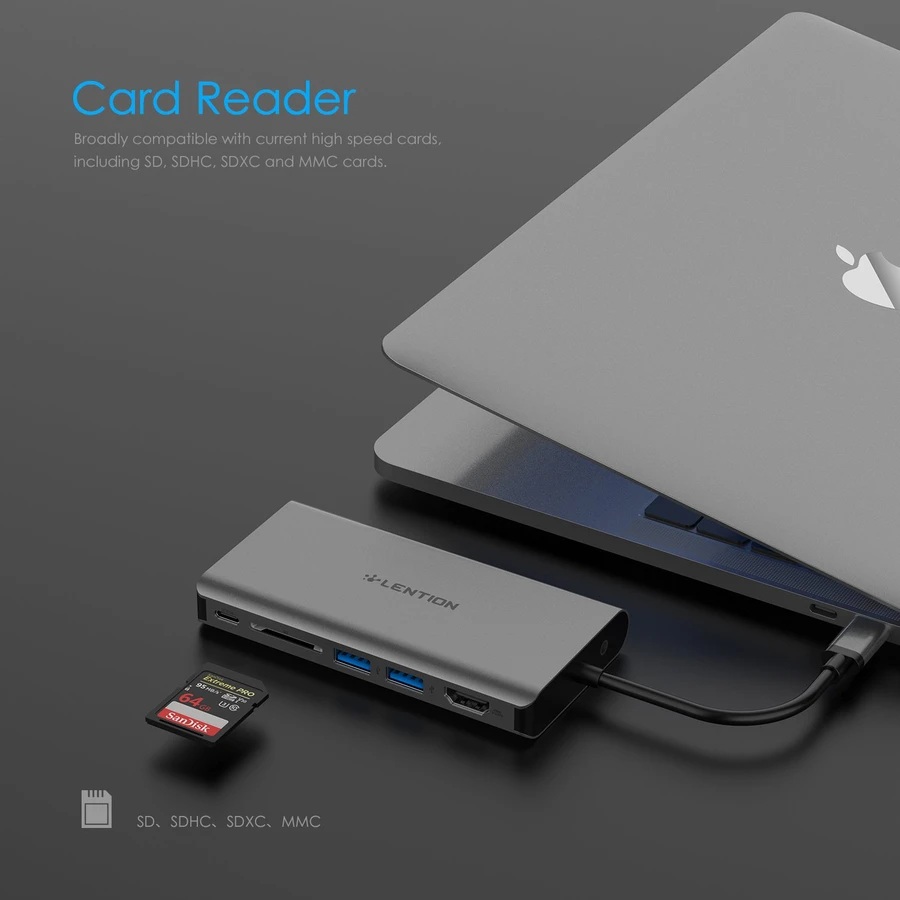In most cases, whenever you are connecting an external hard drive to your MacBook, the drive will usually show up in your Finder window, at least that is what you expect to happen. However, there are times when, despite being connected, your external hard disk won’t appear amongst your available drives. This can be a very thoroughly frustrating experience especially if you are in the process of attempting to transfer some important files and documents. Moreover, it can be even more alarming, because it could also be an indicator that the content you are trying to transfer could be corrupted. [usb c multi hub]
In fact, in most situations, the hard drive was probably not connecting because of corrupted file data, but then again, there are a multitude of other reasons as to why your external hard disk isn’t connecting, so don’t panic, just yet.
How To Fix The Problem
By this point, you are probably wondering why your external drive isn’t popping up and we’re here to let you know there’s a number of reasons as to why your USB connection isn’t reflecting on your Finder. The first thing you need to do is:
- Confirm it is properly connected: It may sound pretty straightforward but you’d be surprised how many instances that the failing connection is due to a faulty or damaged USB or HDMI cable. You need to make sure that the cable is functioning correctly and if it seems sliced or loose in some way then you should probably purchase yourself a replacement 10ft usb c cable instead.
- Confirm that your USB port isn’t damaged: It is possible the USB port you are attempting to connect is damaged, in which case switching to another port would help fix the problem.
- Restart Your Device: In some cases, it is possible the reason that your USB port isn’t working is a system issue. In which case, performing a Mac restart should help fix the faulty port. This is because rebooting will normally clear your Mac’s system memory and refresh it.
- The Drive May Not Be Mac Compatible: There are cases where the external hard drive is not properly formatted to function on the macOS system. In these cases, these drives can only be operated and accessed using a Windows computer, so if you have one, you can always test to see if it works fine on that system.[ 10ft usb c cable]
- Reset NVRAM: You can always perform an NVRAM reset by turning off your Mac and holding down the Power, Option, Command, P, and R buttons for about 15 seconds or so. You should wait until the Mac restarts a second time and you hear a second start up chime, at which point release the keys.
- Disk Utility: You can access your Mac’s disk utility tool in your Launchpad menu and check to see if the external disk pops up. If you do see it, elect the Mount option, which should make it show up in your Finder and Desktop.
However, if the problem still persists and none of the solutions works, then it is possible that your external drive is faulty. The good news is by using data recovery applications like Disk Drill, there may still be a chance for you to recover the lost data.
Fix The Faulty Hard Drive Using First Aid
In the event that you tried everything to make the external hard disk work but to no avail, then the next logical step is to try and fix the hard drive. You can do this by heading to the Disk Utility tool on your Mac then locating your external hard disk, selecting the First Aid tab and clicking Run to start running a diagnostic scan. In doing this, the First Aid tool will examine the hard drive for any faults or problems and try to fix the issues that it may be plagued with.
If it is successful, your external disk drive should be fully functional. However, if it doesn’t work then it would unfortunately mean that your hard drive is permanently broken and cannot be read. The next best thing you can attempt to do is to format the hard disk instead.
Formatting The Hard Disk
As mentioned before, a possible reason as to why your external hard drive is not being recognised is because the file format may be incompatible. This happens because Windows software usually utilises NTFS format for it’s files whilst Apple now uses APFS, for its newest MacBooks. The difference in compatibility may be the reason why your external disk drive refuses to respond when connected. However, you can always do some online research and figure out the best method to format the hard disk to be read on your MacBook or take it to a qualified technician to do it for you. If you do decide to take both devices for a check up, remember to carry it in a macbook leather sleeve for protection against external damage. After all, you already have one problem with your Mac, so you don’t want something else to pop up, right?![ laptop desk riser]
Conclusion
In summary, this article should give you some idea of how to fix your external hard drive problem. With the numerous suggestions and solutions we have listed in this article, one of these is bound to help you solve your issue! However, if nothing works, take it to your nearest Apple Store and have them do a diagnostic, they should be able to fix the problem for you quite easily. In fact, while you are there, you should take advantage and ask them to do a system check for you to make sure your Mac is in proper working order.
